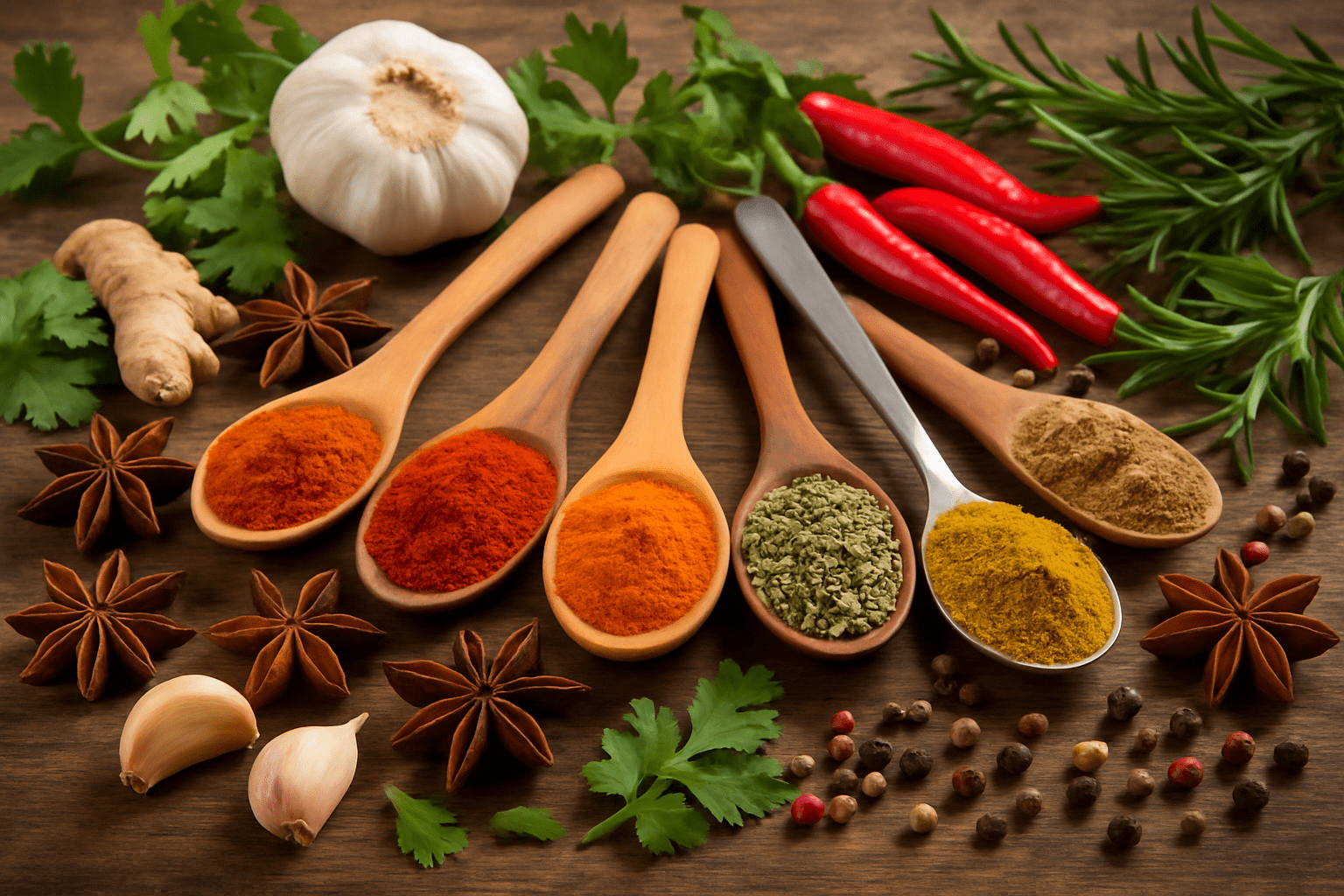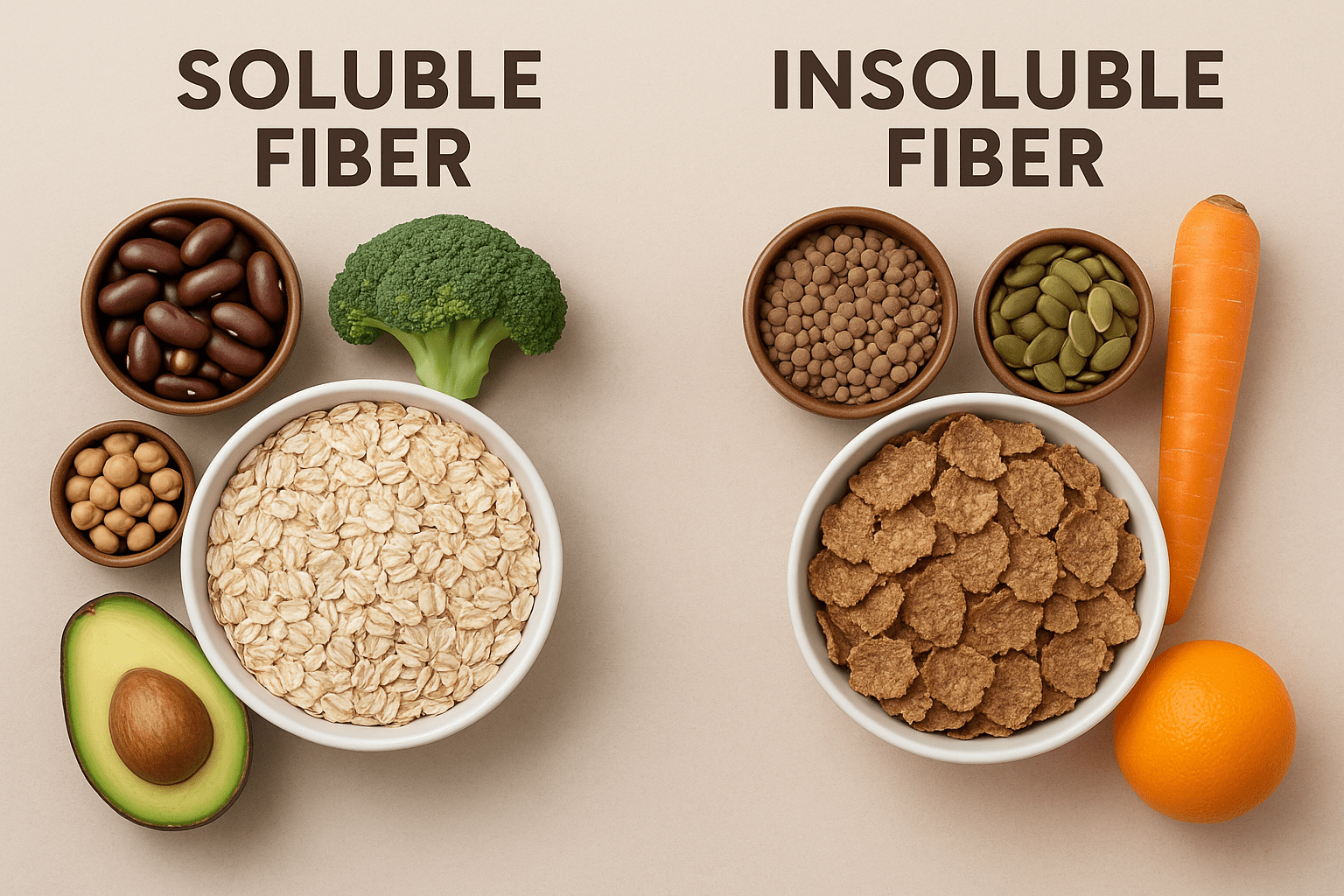A Colourful Plate is Not Only Good for the Eyes
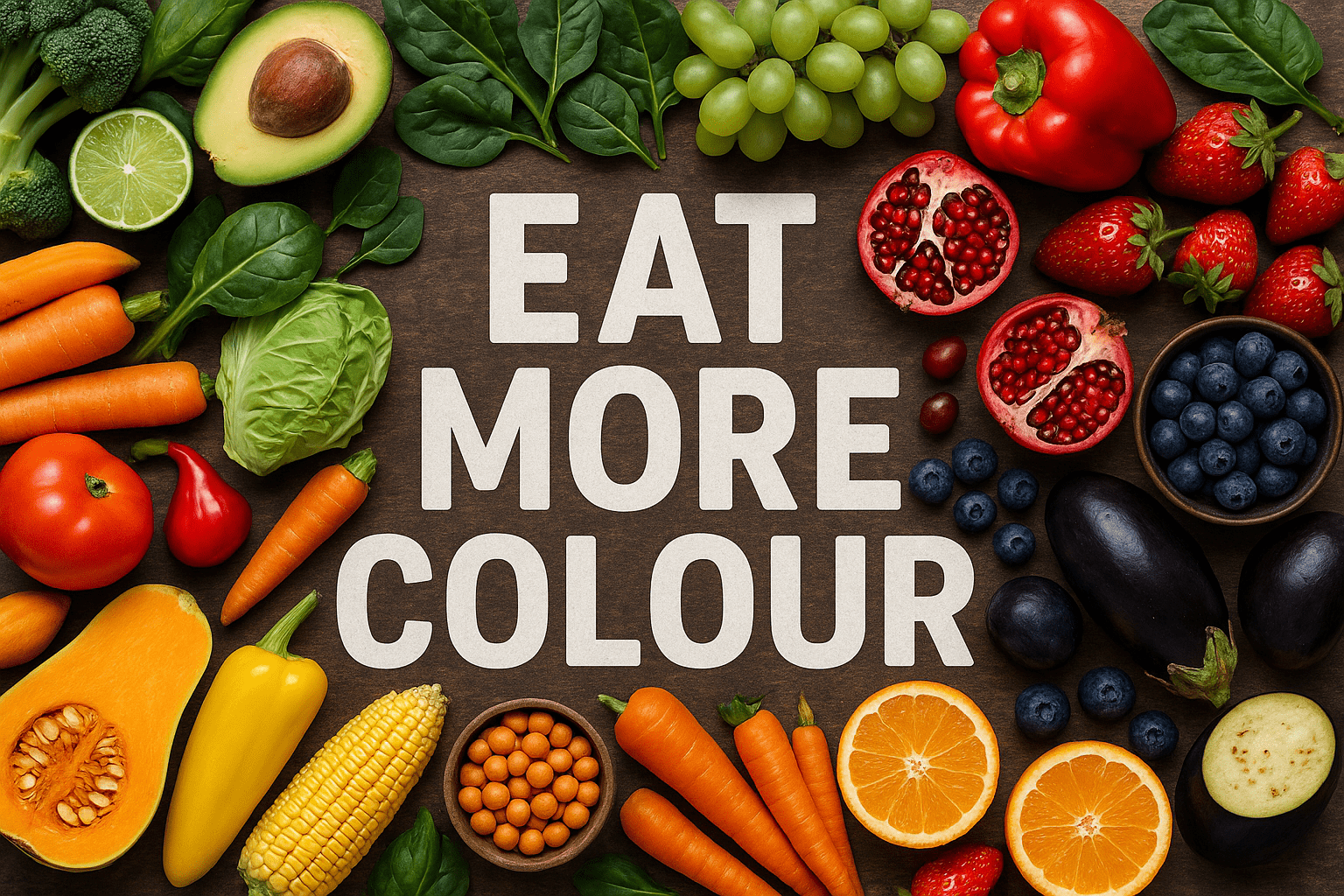
Eating a rainbow refers to incorporating a wide variety of colourful fruits, vegetables, and other nutrient-rich foods into your diet. They not only look pretty and vibrant on the plate, but each colour in the spectrum represents unique nutrients and health benefits, making your meals both visually pleasing and nutritionally balanced.
Colours of Food and Their Meanings
Each colour of food signifies specific nutrients and antioxidants that support overall health. Here’s how:
- Red: Foods like tomatoes, strawberries, and red peppers contain lycopene and anthocyanin, which support heart health and may reduce the risk of certain cancers.
- Orange and Yellow: Carrots, sweet potatoes, and oranges are rich in beta-carotene and vitamin C, promoting eye health and a strong immune system.
- Green: Leafy greens, broccoli, and kiwi are packed with chlorophyll, folate, and vitamin K, essential for bone health and detoxification.
- Blue and Purple: Blueberries, eggplants, and purple cabbage contain anthocyanin that support brain health and fight inflammation.
- White and Brown: Foods like garlic, onions, and mushrooms contain allicin and other compounds that enhance immunity and heart health.
Eating a variety of colours ensures a diverse intake of phytonutrients, vitamins, and minerals. Each nutrient works synergistically to:
- Boost immunity.
- Enhance energy levels.
- Reduce inflammation.
- Support long-term health and disease prevention.
Portion and Macronutrients
In addition, understanding portion sizes for macronutrients ensures that your colorful plate aligns with your dietary needs. Each macronutrient has unique functions that are essential for a healthy, vibrant body, and together they contribute to creating a balanced, colorful plate that fuels your health and wellbeing. Carbohydrates are often seen only as an energy source, sometimes giving the impression that they are less valuable to the body compared to protein. You may even hear advice from friends to “cut down on carbs and focus more on protein.” All macronutrients play vital roles in maintaining a well-balanced diet. Neither should be excluded or overshadowed by the other. A well-balanced diet comprises all macronutrients in appropriate amounts.
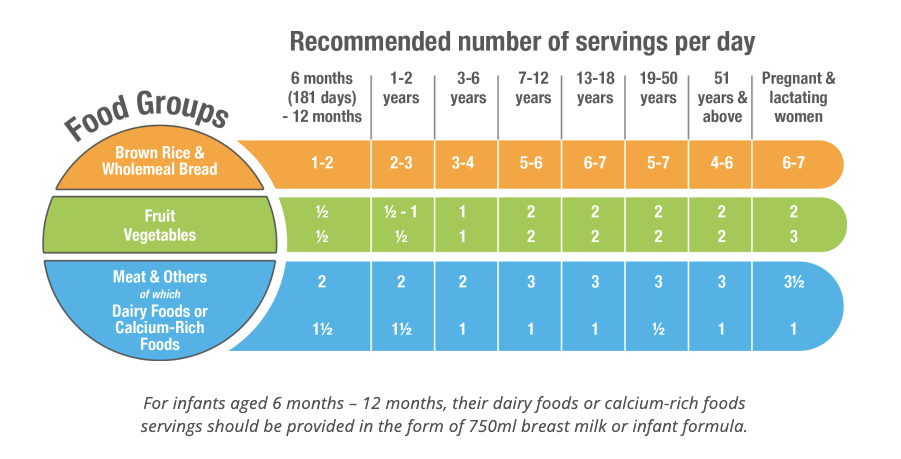
Let’s explore the portion guidelines, and practical tips for embracing a rainbow on your plate.
- Carbohydrates: 1 serving is about ½ cup of cooked grains (rice, quinoa, or pasta), 2 slices of bread, or ½ a medium potato.
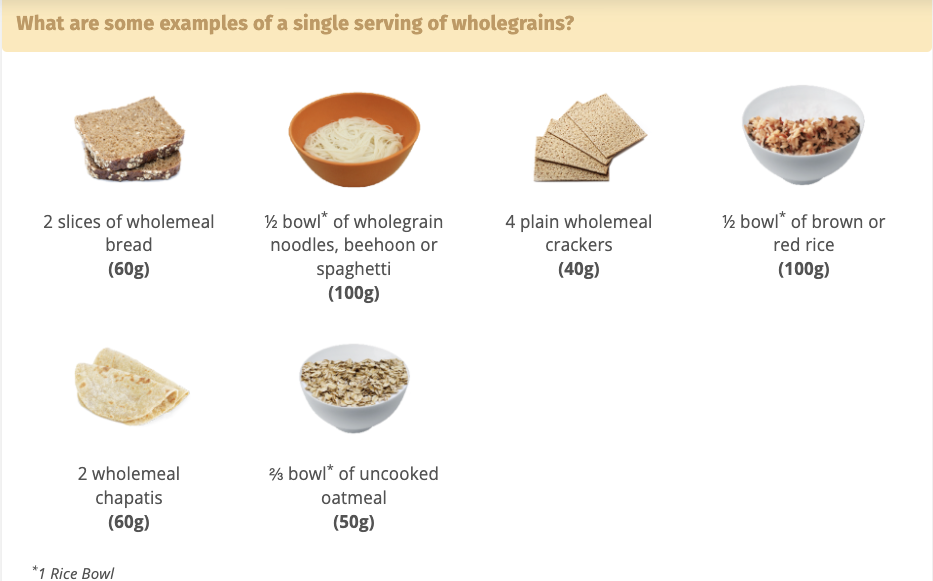
For better nutrition, choose whole grains whenever possible. Whole grains are nutrient-dense because they are not heavily processed, allowing them to retain their original structure and essential nutrients. In contrast, refined grains like white rice and white bread undergo processing that removes important parts of the grain, leading to a significant loss of valuable nutrients. Whole grains are rich in:
- B vitamins and vitamin E.
- Minerals: Iron, zinc, and magnesium.
- Phytochemical: Plant-based compounds that promote health.
- Dietary Fiber: Essential for digestion and satiety.
Eating whole grains help you feel full for longer, reducing the likelihood of overeating and supporting healthy weight maintenance. Regular consumption of whole grains can lower blood cholesterol, reduce the risk of heart disease, type 2 diabetes, and certain cancers in the long-run. The fiber in whole grains supports a healthy gut by promoting regular bowel movements and feeding beneficial gut bacteria.
- Proteins: 1 serving is about 1 palm-sized of meat, poultry, or fish (about the size of a deck of cards), 1 small bowl of cooked beans, 3 eggs, or 1 cup of nuts which works out to be about 20 to 25 grams of protein.
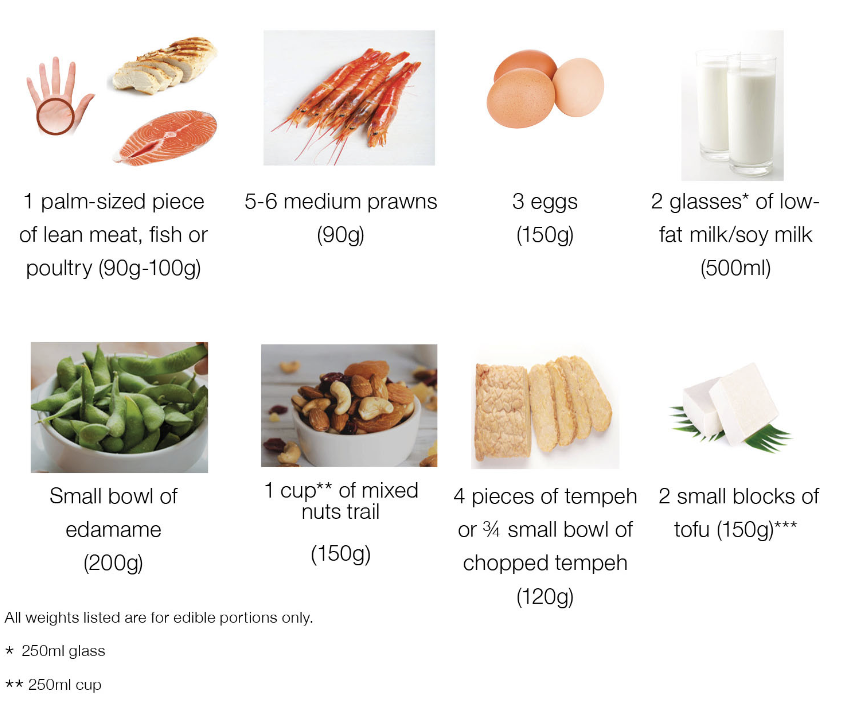
An average Asian aged 18-49 would require approximately 0.8g/kg body weight of protein daily. Older adults aged 50 and above have a higher daily recommended protein intake at 1.2g/kg bodyweight. If you are doing strength training, to aid muscle repair and growth, you can have an even higher daily recommended protein intake of up to 1.6g/kg bodyweight. Incorporating enough protein into your diet is essential not only for keeping your muscles, bones, organs, skin, and nails strong and healthy, but also for hormone regulation, enzyme production and immune system support. Incorporate a variety of protein sources into your meals, combining plant-based options like tofu, beans, and nuts with animal-based proteins like fish, eggs, and lean meat. Fresh protein-rich foods also provide essential nutrients such as iodine, iron, zinc, and vitamin B, which support overall health. Low-fat or non-fat dairy options provide the same benefits of protein and calcium as full-fat varieties but with fewer calories and less fat. This helps support bone health while maintaining a healthy weight. Whether you choose animal-based or plant-based sources, a balanced intake of protein ensures your body functions at its best.
- Vegetables: 1 serving is about ¼ plate of cooked vegetables, 150 grams of raw leafy vegetables or ¾ cup of non-leafy vegetables. Aim for a variety of colors to maximize nutrient intake.
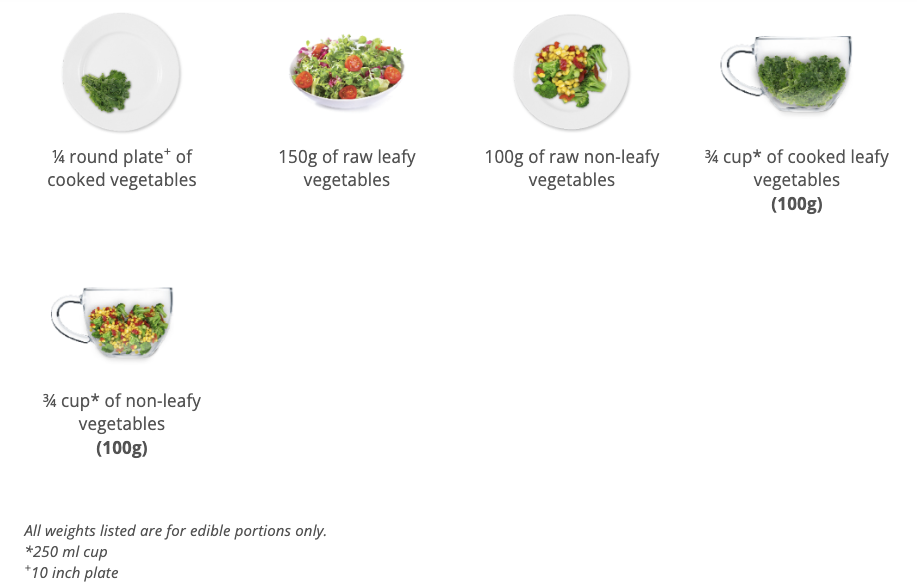
- Fruits: 1 serving is typically 1 small fruit (like an apple, orange or pear) about 130 grams,10 grapes or longans about 50 grams, 1 medium banana about 120 grams and a wedge of papaya, watermelon or pineapple about 130 grams.
Maintaining a healthy weight can be made easier with a simple strategy is to replace high-calorie ingredients with fruits and vegetables. Packed with water and fiber, they add volume to your meals, helping you feel full while consuming fewer calories, promotes proper digestion and bowel function and lowers blood cholesterol levels, reducing the risk of heart disease. Beyond weight management, fruits and vegetables are naturally low in fats, calories, and sodium, while being a nutrient powerhouses essential for your body’s health such as Folate (Folic Acid) which is vital for the formation of red blood cells, and Vitamin A and Vitamin C which protects the body against infections and boosts immunity and supports vision in low light just to name a few. Incorporating more fruits and vegetables into your diet is an easy and effective way to maintain a healthy weight while supporting overall wellness. Their nutrient density and low calorie content make them the perfect addition to every meal!
Simple Tips for Colourful Eating
- Make Each Meal a Rainbow: Aim to include at least three different colours on your plate at every meal. For example, you can add colourful fruits like berries, bananas, or kiwi to your oatmeal or smoothie for breakfast or pair grilled salmon (pink) with steamed broccoli (green), and a side of quinoa (white) for lunch or dinner.
- Snack Smart: Choose colourful options like baby carrots, bell pepper strips, or mixed berries for snacks.
- Try a New Colour Weekly: Experiment with unfamiliar fruits and vegetables to expand your palate and nutrient variety.
- Add to Your Favourites: Toss spinach into your omelet, mix shredded purple cabbage into salads of spinach, cherry tomatoes, shredded carrots, or top yogurt with a mix of colourful berries.
Eating a rainbow is a simple yet powerful way to enhance your diet, ensuring you receive a full spectrum of nutrients for optimal health. By combining colourful foods with appropriate portion sizes for carbohydrates, vegetables, fruits, and proteins, you can enjoy meals that are both balanced and vibrant. Start today by adding more colors to your plate, and watch your health and energy levels transform! Remember to share with Mandy your beautiful food photos.

